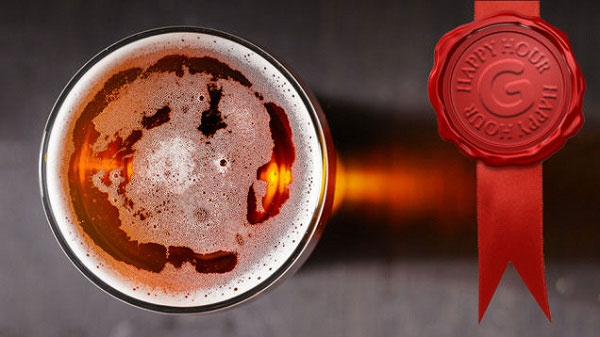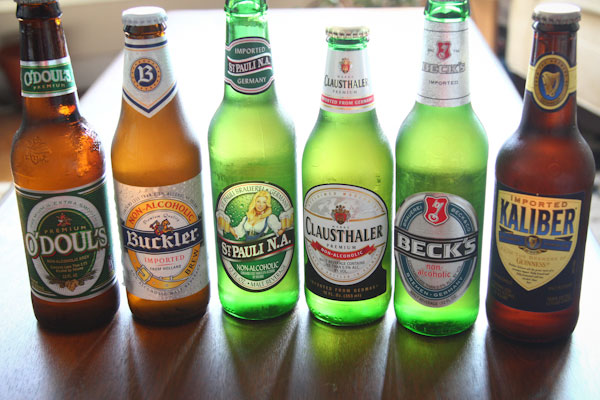Interesting facts about non-alcoholic beer
For professional drinkers, "non-alcoholic beer" is really a "blasphemy" , because "drinking beer without being drunk is what to drink" ? But for many people this is really a drink worth trying. So how is non-alcoholic beer produced? Why is its taste so bad? This article will give you the answer.

Maybe non-alcoholic beer is not a favorite drink of many Vietnamese people, but there are many reasons for this drink to become popular in the market. If you are a pregnant woman, a long-distance driver or are taking antibiotics, what will you do when you feel craving for beer?
The origin of non-alcoholic beer
The idea of non-alcoholic beer first appeared in the United States in 1919. That was the period when the ban on alcohol was in effect throughout the nation. At that time, US law stipulates that beverages are allowed to have a maximum alcohol content of 0.5 degrees. This is indeed an absurd number, because even today's non-alcoholic beers only take it as a ceiling for their alcohol. So at that time some breweries in the US began producing "beer-like drinks , " which were pale, almost tasteless, and had a true alcohol content of 0.5 degrees.
Thirteen years later, the ban has been abolished, but its influence continues. Many Americans have become accustomed to ultra-light, sweet-tasting beers (compared to beers used in drinks). For breweries that have made "beer-like drinks" during the time when the ban was in effect, it was easy for them to continue producing as usual, but adding a little alcohol to the product. This is part of the cause of the popularity of light beers in the US (Miller, Coors, Pabst, Bud, .) today.

How is non-alcoholic beer produced?
The process of non-alcoholic beer production begins to resemble traditional beer. In fact, it is a repetition of all steps, from barley grinding, brewing, adding hops (houblon flowers) and even fermentation. But while alcoholic beer will be bottled as soon as the process is over, non-alcoholic beer will have to begin the process of alcohol removal.
The most common way to remove alcohol from beer is to use heat. As we know, alcohol has a lower boiling point than water (at an altitude of about 80 degrees Celsius). Fermented beer will be heated and kept at that temperature until the solution is only 0.5 degrees alcohol. However, the heat will significantly alter the taste of the beer, because then the ingredients will be cooked again. To limit that, some manufacturers use vacuum distillation. By changing the air pressure, the boiling temperature of alcohol can be reduced to 50 ° C, the heat does not affect the beer taste much.

Another technology sometimes used is reverse osmosis . In this way, beer will be passed through a filter with a very small hole so that only alcohol and water (along with some volatile acids) can pass through. Alcohol will then be separated from the alcohol-water mixture using the conventional distillation method. Finally, water and acid mixture will be mixed with a mixture of sugar and compound stored on the other side of the membrane, forming non-alcoholic beer. Because the main ingredients are not heated, this method has little effect on taste, so the product is preferred, although this process requires workers to be skilled and need to use many devices. suffered.
Even after the alcohol has been removed, it is not yet a final product. After this process, we have obtained a liquid with a taste similar to beer, but quite . pale. Most traditional beers continue the fermentation process after being bottled. This process of converting sugar into alcohol will produce a byproduct of CO2 - a gas producing beer. However, this does not happen in non-alcoholic beer. To make beer foam, most manufacturers simply pump more CO2 in the bottling process. The result is a soda-flavored beer ! Some others add a little sugar and let it ferment itself in the bottle, but that adds to the alcohol content in the beer.
Why does non-alcoholic beer taste strange?
Alcoholics will probably shout at you in the face: "Because it has no alcohol!" . They are not wrong, but in fact, alcohol only helps us feel the characteristic taste of beer. It makes us feel dry mouth and highlights the sweetness of malt, but alcohol itself really doesn't taste at all.
The main cause of the taste change is the process of removing alcohol, especially with the use of heat. The taste and aroma of hops and barley are very delicate, and almost impossible to survive after the process of alcohol elimination. The aroma of hops will disappear completely within the first five minutes of the process, while its taste will disappear after fifteen minutes. This is why we cannot get a non-alcoholic beer that tastes like traditional beer.

One more thing you can or hear people complain about is that alcoholic beer is slightly sour. This problem not only has no alcoholic beer encountered, but when there is no taste of hops overwhelming, sour taste becomes more obvious. As we know, the process of adding CO2 to beer not only creates beer foam but also creates carbonic acid. The sourness is characteristic of acid, and it becomes even more obvious that CO 2 is pumped directly into beer.
Conclude
Even if it's not as good as traditional beer (and indeed it is), non-alcoholic beer is still a drink worth trying, and it won't make you feel ashamed every time you order. As mentioned above, there are many reasons for people to drink non-alcoholic beer. And with the ban on alcohol sales after 22:00 is likely to be issued in Vietnam, non-alcoholic beer will probably become the first choice of Vietnamese consumers.
- Non-alcoholic beer still attracts men
- 9 interesting things about beer
- 10 interesting facts about alcohol that you don't know yet
- Beer and 24 mysteries that you can't expect
- Heineken launches beer ... no alcohol
- Germany extends far beyond the Olympics thanks to ... beer?
- Interesting facts in Germany
- Scientists discovered that beer has a therapeutic effect
- How does beer devastate your liver?
- The first beer for cancer patients
- A series of fun facts that answer your own eternal questions!
- Can beer be seduced by drinkers?
 'Fine laughs' - Scary and painful torture in ancient times
'Fine laughs' - Scary and painful torture in ancient times The sequence of numbers 142857 of the Egyptian pyramids is known as the strangest number in the world - Why?
The sequence of numbers 142857 of the Egyptian pyramids is known as the strangest number in the world - Why? History of the iron
History of the iron What is alum?
What is alum?